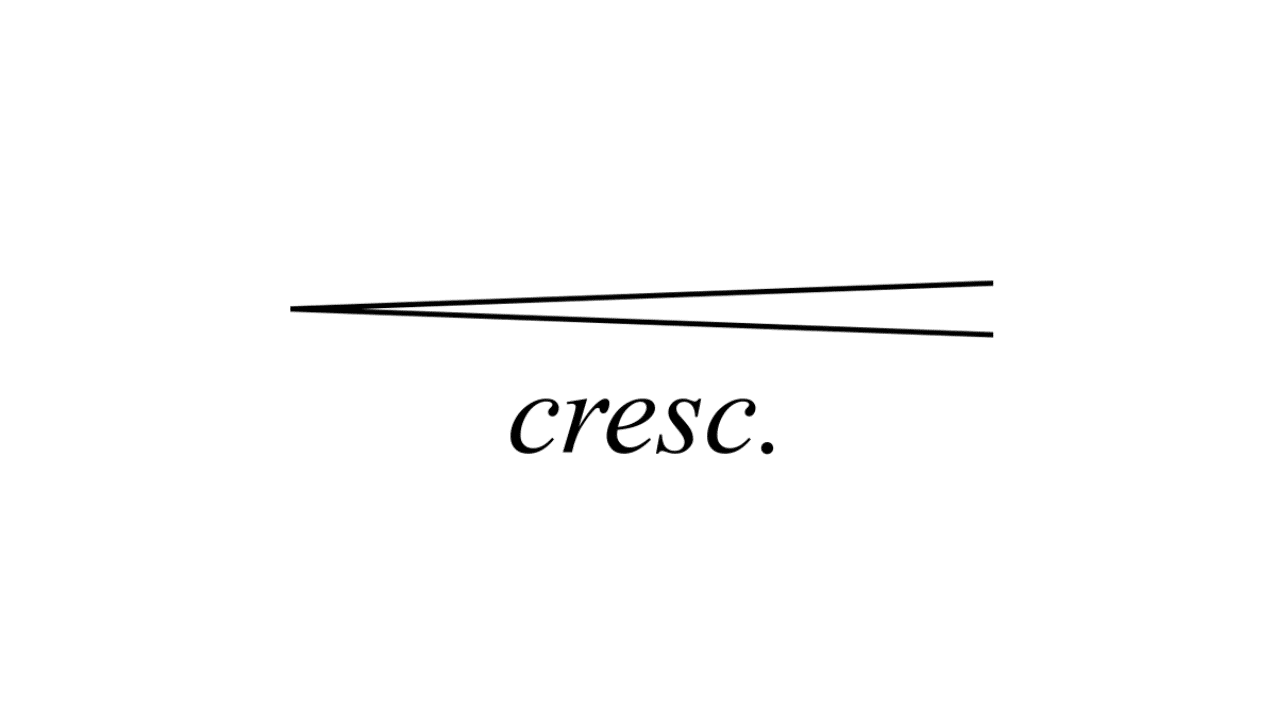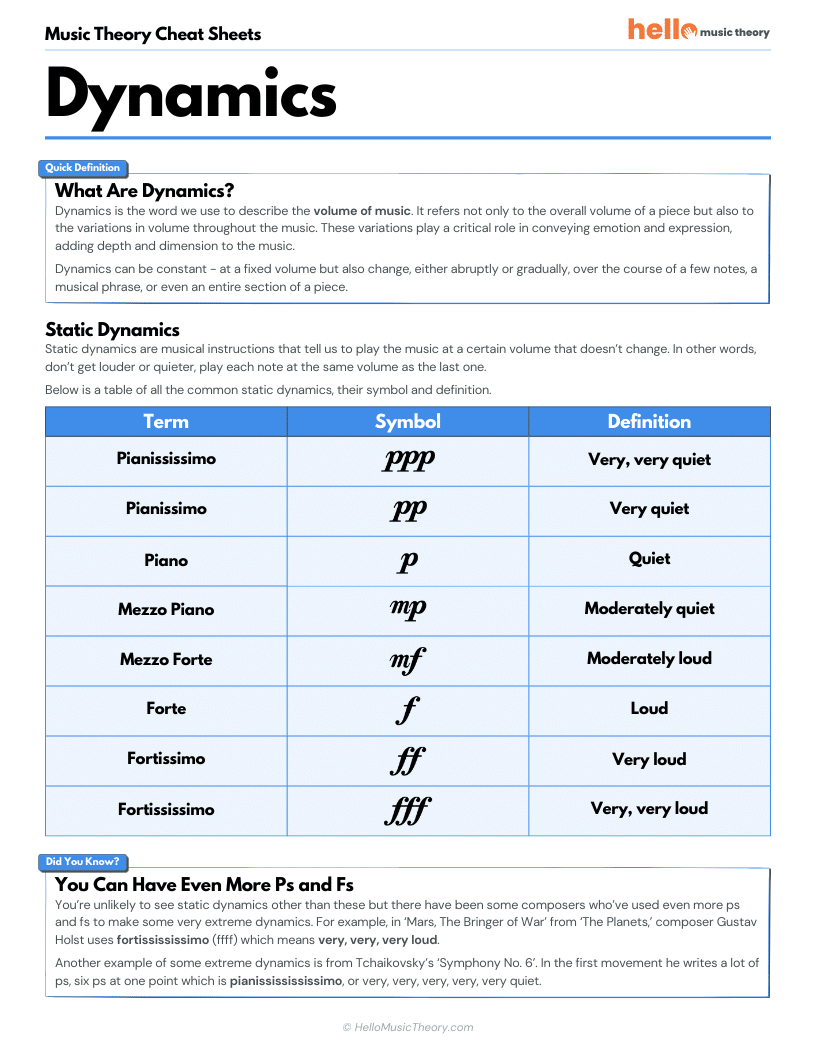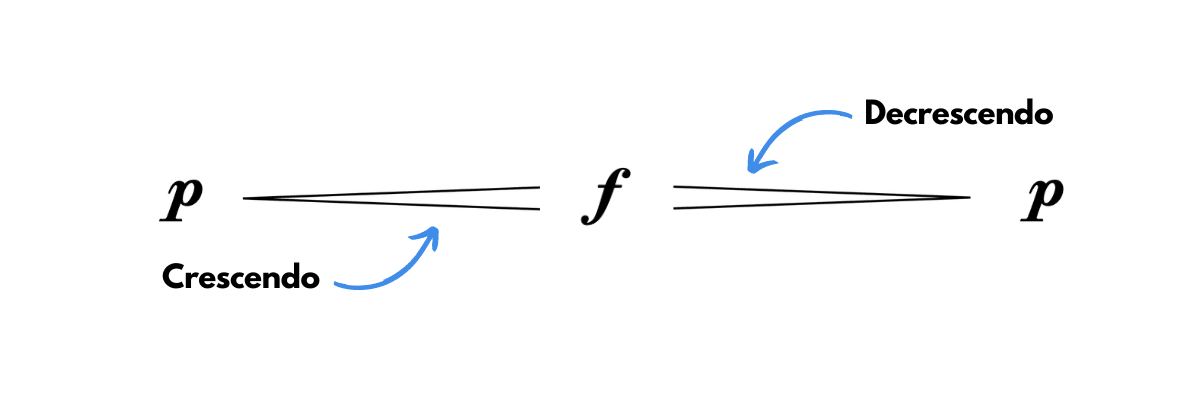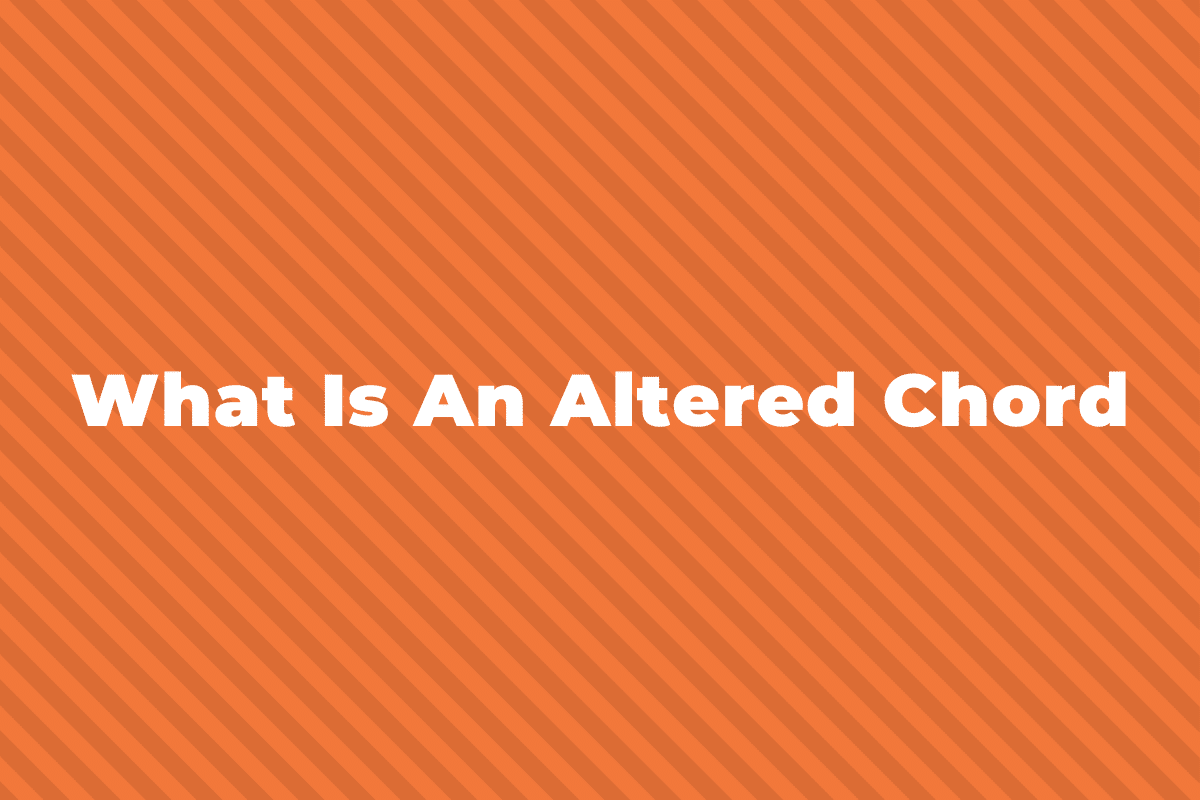Crescendo is an Italian term that means “to increase.” In the context of music, it’s a type of dynamic marking, which means to gradually get louder.
It’s notated in a couple of different ways. Firstly, by writing the word crescendo below the section of music that it applies to. This is often abbreviated to cresc.
However, it’s more common to see a hairpin sign. This shows exactly where the composer wants the musician to start the crescendo and where to finish it.

You’ll often see a dynamic marking before and after the crescendo symbol. This gives the performer an idea of what volume they’re aiming for when gradually increasing in volume.

Get Our Dynamics Cheat Sheet
Learning about dynamics? Sign up for our newsletter and get our dynamics cheat sheet completely free.
DOWNLOAD PDFThe Opposite Of Crescendo

The opposite of crescendo is decrescendo, which means to gradually decrease in volume.
It’s notated in a similar way, by either writing “decresc.” below the music or by a hairpin symbol.
But instead of the two lines starting together and gradually getting further apart, they start apart and gradually come together.
Related Terms To Crescendo
Here are some terms related to crescendo:
- Dynamics: Dynamics is the word we use to describe volume in music.
- Decrescendo: The opposite of crescendo which means to gradually get quieter.
- Diminuendo: Means the same as Decrescendo — to gradually get quieter.
- Sforzando (sfz): Sforzando indicates a sudden, sharp accent on a single note or chord. It can occur within a crescendo or at its climax, adding to the dramatic impact of the volume increase.
Examples Of Crescendo In Music
“Symphony No. 5 In C Minor, Op. 67” By Ludwig Van Beethoven
Symphony No. 5 in C Minor, op. 67, by Ludwig van Beethoven, commonly known as Beethoven’s Fifth Symphony, is a renowned classical music masterpiece.
The most famous crescendo occurs in the first movement. The initial motif (short-short-short-long) is repeated and gradually intensified, creating tension and anticipation.
“Boléro” By Maurice Ravel
In 1928, French composer Maurice Ravel composed a captivating piece called Boléro. The piece starts pianissimo (very softly) and gradually crescendos as the orchestra swells.
“Ride Of The Valkyries” By Richard Wagner
Richard Wagner’s “Ride of the Valkyries” is a powerful and iconic piece of music. It originates from the opera Die Walküre, which was part of Wagner’s monumental cycle of four music dramas known as Der Ring des Nibelungen.
This piece takes around eight minutes and begins with successive layers of accompaniment. As more Valkyries join, the theme becomes more pronounced, and the orchestra swells. The soaring melodies and powerful orchestration create an exhilarating crescendo.

Get Our Dynamics Cheat Sheet
Learning about dynamics? Sign up for our newsletter and get our dynamics cheat sheet completely free.
DOWNLOAD PDF


